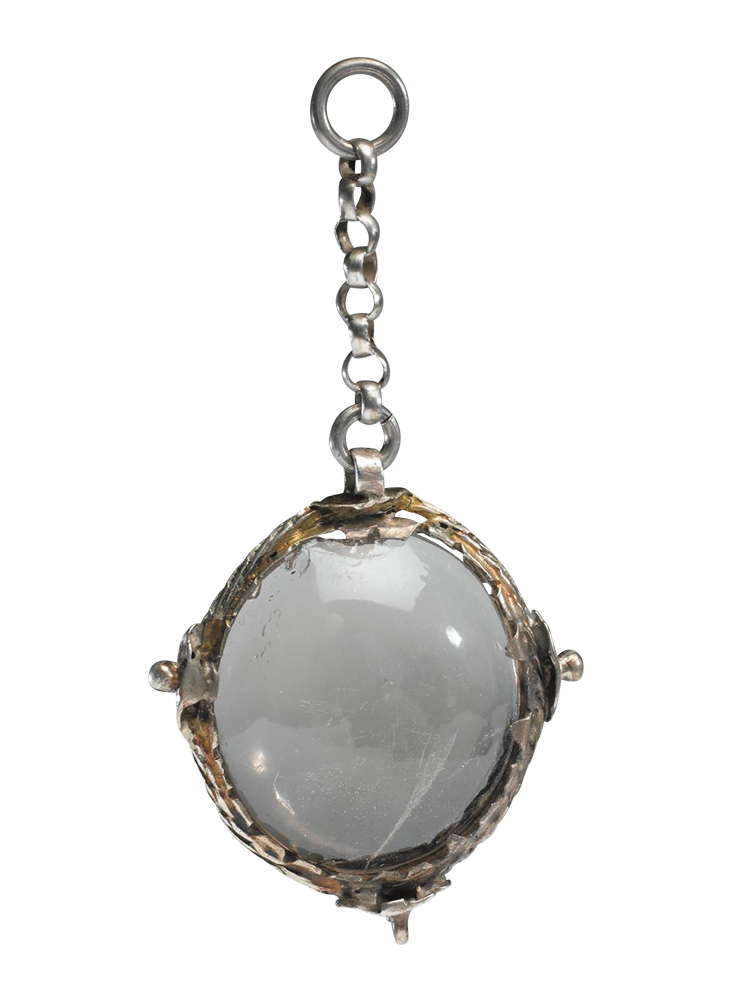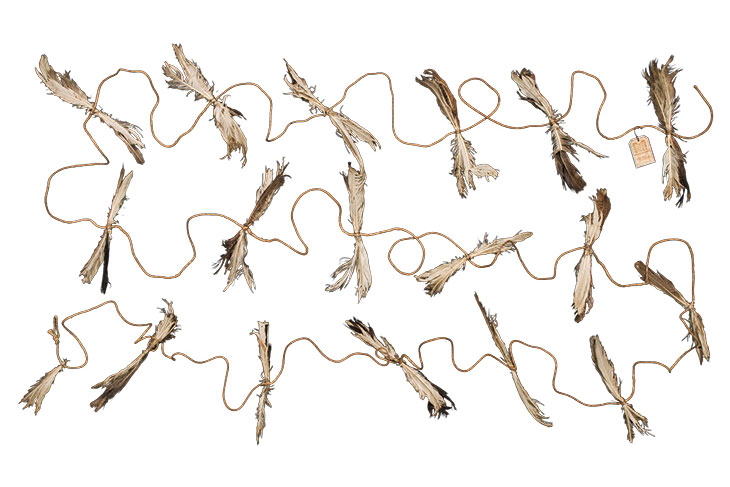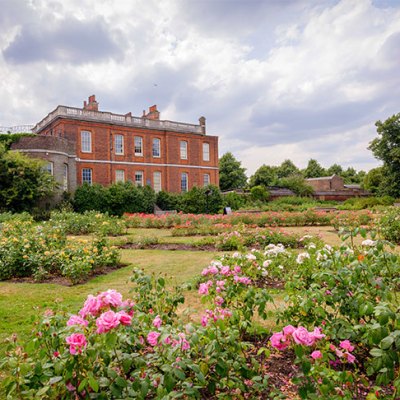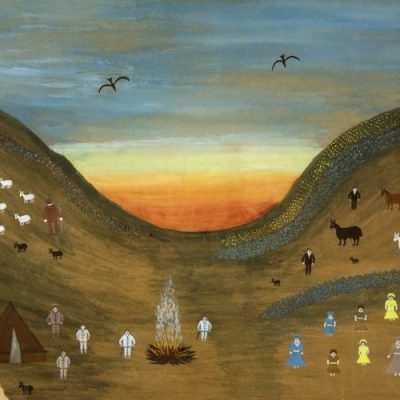Before the Ashmolean Museum in Oxford was refurbished in 2009, its quirkiest collection was to be found in the Tradescant Room. Named after John Tradescant, the 17th-century curio-hunter who first put together this ‘closet of rarities’, here all kinds of odd and unexpected objects jostled for the viewer’s attention. They included two small pieces of mortar from the pyramids at Giza, ‘the slough of a locust’, and an armour-plated hat worn by John Bradshaw ‘as a protection against assassination attempts when he passed sentence on Charles I’. Other objects, awkwardly straddling the worlds of fact and fiction, were no longer on public display: ‘flea chains of silver and gold with 300 links a piece and yet but an inch long’; ‘two feathers of the Phoenix tayle’; ‘Blood that rained in the Isle of Wight’; ‘a bracelet made of thighes of Indian flyes’.
The Tradescant collection has since been broken up, its objects redistributed around the Ashmolean, but the same spirit animates the museum’s provocative and quirky autumn exhibition on the history of magic. Highlights include a mummified cat and rat, originally concealed within a wall to act as a kind of magical scarecrow for pest control, two impressively long unicorn horns (actually narwhal tusks), John Dee’s purple crystal, which was said to have been given to him by the angel Uriel, and a cow’s heart stuck with pins and nails that a dairyman used roughly a hundred years ago as a talisman against someone he thought had put a curse on his cows. Wandering around the exhibition is like being enticed into a modern cabinet of curiosities.
John Dee’s purple crystal (1582), Europe. Science Museum, London

The first things that greet you are a witch trapped in a tiny glass bottle – or possibly just a tiny glass bottle – and a ladder daring you to walk underneath it. From the start, the exhibition’s lead curators, Sophie Page and Marina Wallace, are keen to play with assumptions about how far we still invest our hopes and fears in magical thinking. (They wouldn’t have had to look far for an example: the museum’s director, Xa Sturgis, used to work as a professional magician under the stage name of the Great Xa.) The rest of the exhibition is divided up into three moodily lit areas, each of which contains an interesting historical jumble of objects. One concentrates on examples from the Middle Ages, when the stability that religion promised was always at risk of being disrupted by unpredictable magical forces. The second area examines the history of witchcraft, from stake burnings to spiritualism – the star exhibit here being a string of ‘ectoplasm’, made from an easy-to-conceal cream material that a medium could vomit up and claim was the ghostly shape of the dearly departed.
The final area focuses on the home, often thought to be a body with orifices that were leaky and in need of being blocked with items like enchanted dolls or old shoes. (Visitors are given the opportunity to peer up a chimney and spy a neatly arranged collection of bones and shells, like a little undiscovered museum of objects just waiting to become meaningful.) Here several items have a curiously uncertain status as magical objects. If a knife is found hidden under the floorboards of an old house, was it originally placed there to wound any witches that might try to sneak into the house, or was it a murder weapon? And what of the line of feathers tied together with string that forms the central image of the exhibition: is this a ‘witches’ ladder’ or, as some historians now think, merely a tool used for driving deer?
Locket (mid to late 15th century), English or French. British Museum, London

Of course it’s easy to scoff at anyone who prefers lucky charms to the certainties of logic and science. There’s also the potential for Monty Python-style comedy in some of the stories recorded in the exhibition catalogue, such as the Icelandic girl who set off rumours of witchcraft in 1656 after complaining of ‘vast flatulence’, although it is far less funny to learn that a father and son were subsequently burned at the stake for bewitching her with Fretrúnir or ‘farting runes’. But as other items make clear, even in a supposedly rational age it is hard to resist the temptations of magical thinking. Alongside a 15th-century gold locket in the form of a miniature padlock inscribed sauns repentir (without regret), there is a wall of modern padlocks removed from the Centenary Bridge in Leeds in 2016, many of which carry similar promises that this is a love that will – touch wood – last forever. Even the exhibition’s name provides evidence that our beliefs and words move at different speeds. Every time we describe something as spellbinding or enchanting, or say ‘Bless you’ when someone sneezes, long after we stopped believing that their soul might fall out of their nose, we are giving voice to fragments of earlier superstitions that continue to survive in a supposedly more enlightened time.
The best evidence for this is contained in the exhibition’s use of three specially commissioned art installations. Ackroyd & Harvey offer the cast of a young man made from sparkling aluminium sulphate crystals, like an image of the night sky that has been brought back down to earth, while Annie Cattrell illustrates the unpredictable hysteria of witch hunts in a black and white film that shows a single candle flame developing into a fire that licks greedily across the screen. But the most memorable work is Katharine Dowson’s Concealed Shield, in which a giant glass heart is suspended in a pitch-black chimney, gently rocked by wafts of air, while red lasers play on the walls and eerie ticking and scurrying sounds surround the viewer. It’s a wonderfully creepy portrayal of the theory that the best way to kill a witch was to cast a spell on another creature’s heart and pierce it with sharp objects. It’s also a perfect illustration of the idea that of all the things that can go bump in the night, probably the hardest one to control is the beating of your own heart.
‘Spellbound: Magic, Ritual and Witchcraft’ is at the Ashmolean Museum, Oxford, until 6 January 2019.
From the October 2018 issue of Apollo. Preview and subscribe here.



